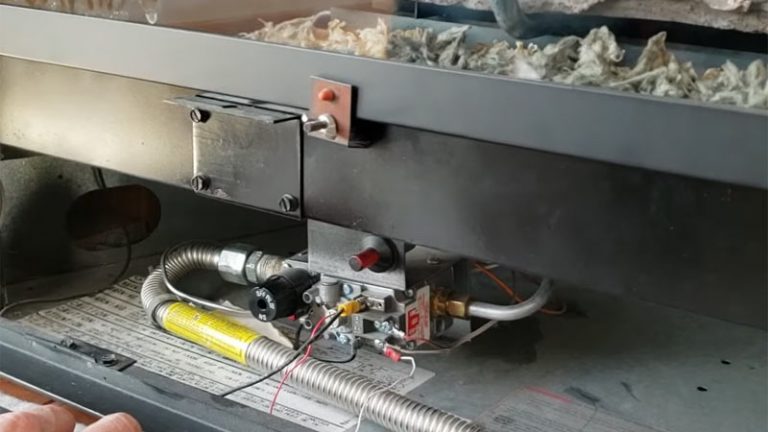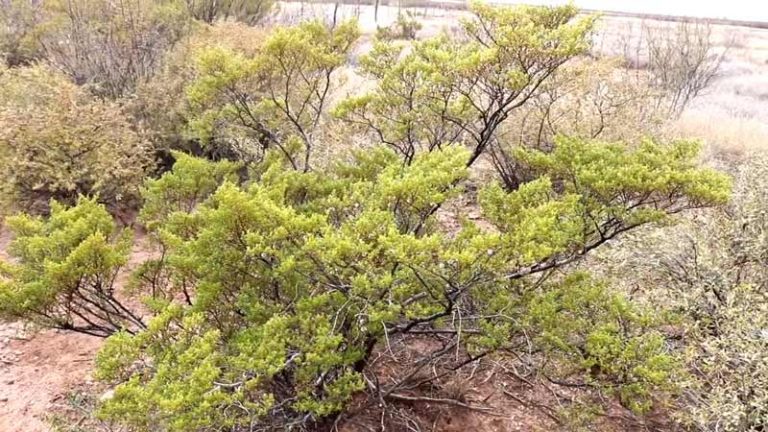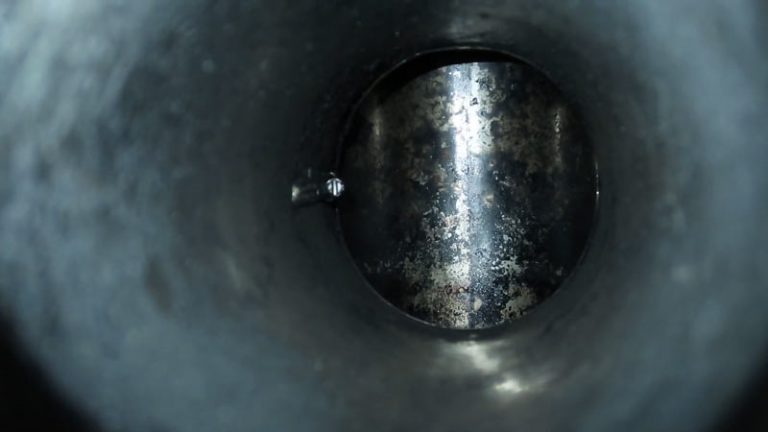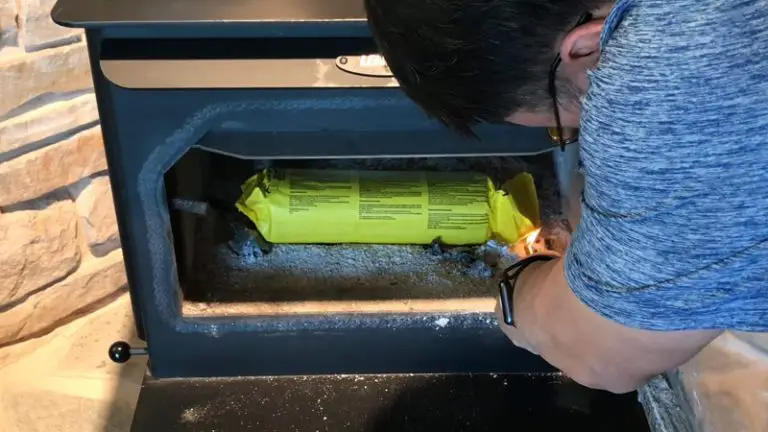How Do I Keep Cold Air from Coming in My Gas Fireplace
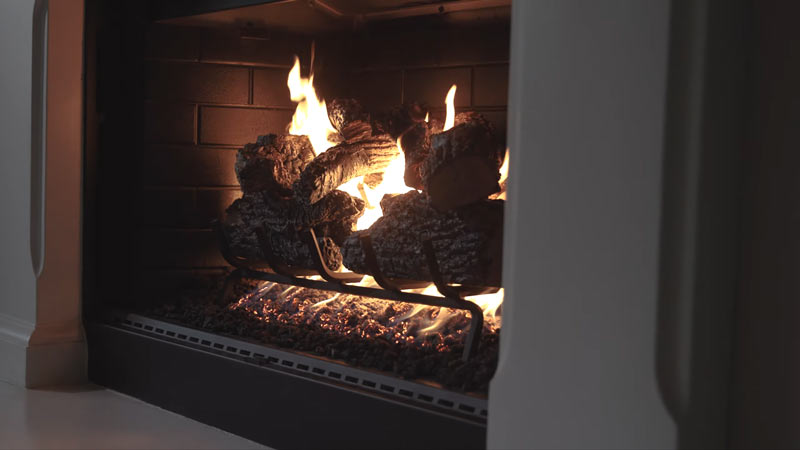
Keeping your home warm in winter is important. To achieve this, you can insulate the chimney or seal ventilation openings.
Ventilation sealing helps to keep cold air outside and warm air inside. Magnetic fireplace vent coverings are effective for lower vents while Direct Vent Firehouse Termination Cap Cover works on exterior caps.
Both these methods prevent heat loss through vents during winter months. Consequently, homes stay warmer without additional heating costs.
Installing these protective devices such as magnetic covers or fire hat terminations need expert advice to ensure they work well and avoid unnecessary damages.
For long-term energy efficiency of homes, it’s crucial to maintain chimneys’ insulation all year round by replacing materials that have deteriorated over time with new ones suitable for weather changes.
Insulating a house’s chimney ensures that warmth does not escape from the room when temperatures drop especially at nights thereby saving money spent on heating bills every month.
You'll Learn About
How Do I Keep Cold Air from Coming in My Gas Fireplace?
Protect your home from drafts by insulating your chimney with fireplace glass. Prevent warm air from leaving the house by sealing ventilation openings and installing a firehouse termination cap cover on the outside of the fireplace.
Keep cold air out of your home by installing a magnetic fireplace vent cover on the lower vent and sealine.
Insulate Your Chimney with Fireplace Glass
You can insulate your fireplace with glass to keep cold air from coming in. It’s a relatively easy project that you can do yourself if you have basic tools and skills.
Make sure the glass is tightly fitted onto the chimney, so drafts don’t enter the room through it. If there are gaps between the glass and the chimney, heat will escape during wintertime, causing your fireplace to go out unnecessarily frequently.
Always use caution when working around open flames – never leave them unattended.
Seal The Ventilation Opening
A common way to prevent cold air from entering your home in the winter is by sealing the ventilation opening on top of your gas fireplace. Another option is using a heat shield to cover the chimney when not in use.
You can also install storm windows or door seals to keep drafts and cold air out during inclement weather conditions. Check for cracks and crevices around the fireplace that could be letting in cold air – take action if necessary.
In all cases, being proactive will help you avoid costly repairs down the road due to poor indoor climate control.
Make sure any screens are properly fitted around windows and vents to keep out debris and bugs. Check for smoke coming out of chimneys and fireplaces – if there’s a problem, call a professional. Fill any cracks or gaps around doors, windowsills, vents, etc., with caulk or sealant to create an airtight seal
Install A Magnetic Fireplace Vent Cover
Install a magnetic vent cover to stop cold air. Best time is no wind. Measure your fireplace opening before purchasing the cover as not all fit perfectly. Consult the manual for compatibility, most covers work with certain models only.
The magnetic
vent cover is a great solution for gas fireplaces that don’t have built-in covers. It helps prevent cold air from entering, which can disrupt the circulation of warm air and cause drafts in your home.
Installing the vent cover during a time when there’s little to no wind is important so it stays put securely. Before purchasing one, make sure you measure the opening of your fireplace as not all covers fit perfectly. Also note that some models may not be compatible with certain types of magnetic vent covers – always consult the owner’s manual for more information.
It’s possible for specialized or higher-end products to be available marketed towards specific brands or models so it’s worth researching this option if you’re willing to pay extra money.
In conclusion, installing a magnetic vent cover on your gas fireplace could help save energy by reducing heat loss caused by drafts and cold air infiltration while helping keep temperatures steady throughout winter months.
Install a Direct Vent Firehouse Termination Cap Cover
To prevent cold air from entering your gas fireplace, use a direct vent firehouse termination cap cover. You can buy them at home improvement stores and the installation process is easy.
Before purchasing a cover, measure the diameter of your fireplace opening to ensure it fits well on the outside cap. While fitting or removing the termination cap cover from your gas fireplace wear gloves as there will be open flames near you.
To keep safe while working around an open flame always remain cautious. It’s vitally important that you replace this every year so that your gas-fired stove can function effectively and securely.
How do I stop cold air from coming through my gas fireplace?
If you’ve noticed a draft coming from your gas fireplace, it can be uncomfortable during the colder months. There are some steps that you can take to minimize or eliminate any cold air infiltration.
Firstly, check for any gaps between the front of your unit and where it meets with the wall around it. Use caulk or sealant to fill in those openings properly. Secondly, ensure that there is no debris or dirt buildup on venting pipes because they should remain clean so as not cause any blockages which could lead to drafts.
Thirdly, look at getting glass doors installed for an added layer of protection against cold airflow into space when not using flames inside out and still see only what’s outside instead! Fourthly – invest little bit money here– consider purchasing insulation packs specifically made just curtains; this way light doesn’t get through but insulates heat stays indoors t0o make sure all warmth benefits stay within range while minimizing escape routes!
Lastly whether operating new modern appliances such as high-efficiency furnaces on low settings throughout day until bedtime avoid shutting off completely. You’ll keep experience much warmer comfort levels provided by heating system. That keeping circulate warm conditioned atmosphere consistently flowing throughout home. Happy winter season everyone! Stay cozy!
Why does so much cold air come in through my gas fireplace?
One common reason why so much cold air comes into a gas fireplace is because of the damper. This is an opening in the firebox that allows warm air to escape, and it can get blocked by ashes or wood chips.
If this happens, cold air will start coming in through the damper instead.
Check to see if the pilot light is working
A gas fireplace needs a properly functioning pilot light in order to operate. If this light is not lit, then cold air will come into contact with flames and can create dangerous conditions.
Make sure all vent pipes are sealed
Obstruction in vents is very bad for any kinds of systems. If you have obstructions in your vents, cold air will be able to enter your home through the gas fireplace and cause problems such as frozen pipes or even an electrical fire.
Adjust dampers on fireplace flue
Damper adjusment can solve this issue. Warm air rises and dries out faster than cold air, so by adjusting the damper on the flue you can help promote a warmer draft and increase airflow throughout your home’s interior spaces
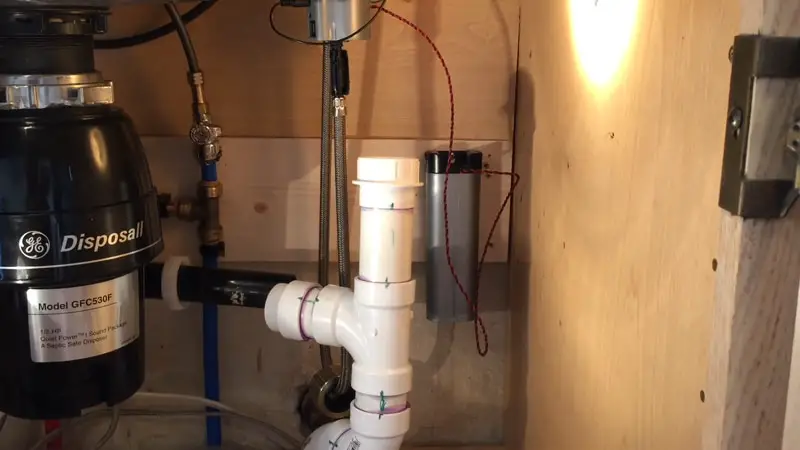
What is a draft shield on a gas fireplace?
A draft shield is a part of a gas fireplace that helps to prevent drafts and smoke from coming into the living area. The draft shield usually has openings on both the top and bottom, so it can be easily adjusted.
- Draft shields are required when converting a VRL4543ZE fireplace into a see-through unit. The draft shield will limit the amount of draft that the fireplace pulls and keep your flames consistent with a linear barrier kit (LV43B).
- A draft shield is also necessary if you want to install an LPV4544LP gas fireplace in an existing home or building because it allows for more airflow through the system which eliminates hot spots and prolongs the life of your appliance.
- To install a draft shield on your VRL4543ZE, you need to purchase the LV43DS kit from our website. This kit includes all of the necessary components needed to complete installation including screws, washers, and nuts.
If you would like to limit how much air flows through your see-through gas fireplace, then consider purchasing a linear barrier kit (LVI43B) from our website as well. This option provides additional protection for both sides of the fireplace screen while still allowing adequate airflow throughout your unit.
How do you redirect heat from a gas fireplace?
To redirect heat from a gas fireplace, take these steps. Open the flue damper for more airflow to radiate away the heat. Cover firebox with damp cloths or use an ash catcher to prevent embers from escaping.
Further, ensure furniture is out of harm’s way and increase convective airflow by placing a fan near your fireplace. You may also hang tempered glass doors on opposite sides of your home.
As another option consider installing vents within other areas that allow natural air flow throughout all spaces in the house instead of trapping warm air into only one place.
By following these suggestions, you can make those winter nights warmer and cozier!
Install a Heat-Zone Kit
Installing a heat-zone kit is an effective way to redirect the heat from a gas fireplace. This kit includes ducts that are installed behind the fireplace and directed towards different areas of the room or house.
The first step in installing this kit is to ensure that your gas fireplace has sufficient clearance for installation – this can vary based on manufacturer specifications but generally requires at least six inches of space around all sides of the unit.
Next, you will need to install vents into each route where you want heated air redirected. If drilling through brick or masonry walls, consult with professionals as special tools/measures might be required.
Once these preliminary steps have been completed, it’s time to assemble and install your new burn chamber box and furnace plenum (includes airflow system).
Finally, attach dampers inline between diverter mixer boxes located inside each vent–these should allow selective control over temperature/airflow. The airflow delivered by individual iron grates positioned just below openings in wall cavities opening doors out onto adjacent rooms.
It is within home interiors depending upon given instructions provided by makers/manual guide books when purchasing said kits themselves online/on store shelves near heating supplies area found at Lowe’s/Home Depot!
By following these simple steps carefully while also seeking guidance if needed. Consumers can benefit greatly from transforming their Gas fireplaces into versatile sources of warmth throughout various regions. Regions across homes/apartments which may experience varying temperatures during winter months!
Use a Blower
A blower comes in handy for various tasks. For instance, it can help to spread warm air around a room or circulate cold air. You can use a blower with gas fireplaces and disperse heat from them.
To make this happen, put the blower close to the fireplace then switch on. The warm airflow will push into the fireplace making everything cozy.
The amount of warmth produced by your gas fireplace depends on some factors such as fuel type, number of burners used and flue systems applied.
You could measure how much heat is generated using “heaters.” They work efficiently, capturing all lost hotness.
You don’t have to buy one; they come packaged specifically for fireplaces or download online programs that do that too!
Use a Thermometer
This device measures fireplace air temperature. It’s available in stores. Displays vary.
Digital displays are easy but not always accurate, while analog ones are accurate yet harder to read. Calibrate the device for accuracy by using a thermostat before use.
To ensure accurate readings, calibration is key when using a heater. This involves using a thermostat to make adjustments.
In stores, you can find devices that measure the temperature of fireplace air. Displays come in digital or analog formats. Digital ones are user-friendly but accuracy varies while analog displays are more precise yet may be difficult to read.
It’s imperative not to overlook calibrating the device before usage for correct measurements and better results.
How do I keep my fireplace from droughting?
Clean the chimney to prevent draughts from entering your home. Check for and repair damaged fireplace components so that draughts don’t enter your home.
During cold weather, installing a draft stopper is crucial to prevent drafts from entering your home. To minimize drafts and indoor pipe smoke/fumes, fill the fireplace with heated stones or cinders when not in use.
To avoid ash residue on furniture near the fireplace, place a fireguard over the open flame. Place a fireguard over the open flame if you want to avoid leaving any ash on the furniture surrounding the fireplace.
To Recap
There are a few things you can do to help keep cold air from coming into your gas fireplace. You need to make sure the fire is properly burning – if it’s not, the cold air will be able to enter through the chimney.
Note: This article is generated by AI in some parts but fact-checked by humans, added and removed some information.

